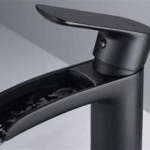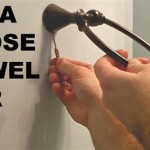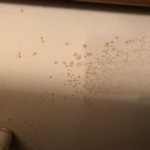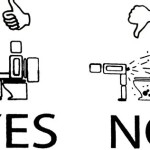Bathroom Sink Leak Repair: A Comprehensive Guide
A leaking bathroom sink is more than just an annoyance; it can lead to significant water waste, potential water damage to surrounding structures, and even the growth of mold and mildew. Addressing a leaky sink promptly is crucial to preventing these problems and maintaining a healthy and functional bathroom. This article provides a comprehensive guide to identifying the source of common bathroom sink leaks and outlines the steps involved in repairing them. This information is intended to empower individuals to address minor leaks themselves and understand when professional assistance is necessary.
Before commencing any repair work, it is imperative to prioritize safety. Begin by turning off the water supply to the sink. Typically, there are shut-off valves located directly beneath the sink, one for hot water and one for cold. Turn these valves clockwise until they are fully closed. If shut-off valves are absent or malfunctioning, the main water supply to the house must be shut off. Once the water supply is secured, place a bucket or container beneath the area of the suspected leak to catch any residual water. Finally, protect the surrounding area with cloths or towels to prevent further water damage.
Identifying Common Leak Sources
Pinpointing the source of the leak is the first and arguably most important step in the repair process. Bathroom sink leaks can originate from various locations, each requiring a specific approach for resolution.
One common source is the faucet itself. Leaks around the base of the faucet often indicate a problem with the O-rings or cartridges within the faucet assembly. These rubber components degrade over time, leading to water seepage. Leaks emanating from the faucet spout or handles may suggest a worn cartridge or valve seat that requires replacement.
The drain assembly is another frequent culprit. Leaks under the sink, particularly around the P-trap or drainpipe connections, can stem from loose connections, corroded pipes, or damaged washers. The P-trap, the curved section of pipe under the sink, is designed to trap debris and prevent sewer gases from entering the bathroom. This area is prone to clogs and subsequent leaks if not properly maintained.
Supply lines, the flexible hoses connecting the shut-off valves to the faucet, are also susceptible to leaks. These lines can deteriorate over time, especially at the connection points. Mineral buildup or corrosion can weaken the fittings and cause them to drip. Regularly inspecting these lines for signs of wear and tear is a proactive measure to prevent future leaks.
The sink rim, where the sink bowl meets the countertop, can also leak if the sealant has deteriorated. This is more common with drop-in sinks. Water can seep through the gaps in the old sealant. Replacing the sealant around the rim is often required to stop this type of leak.
Repairing Faucet Leaks
Repairing a faucet leak depends on the type of faucet installed: compression, cartridge, ball, or ceramic disc. Each type has a unique internal mechanism and requires a slightly different approach.
For compression faucets, which are easily identified by their two separate handles for hot and cold water, the most common cause of leaks is worn-out O-rings and washers. To repair, shut off the water supply and disassemble the faucet handles. This usually involves removing a decorative cap to access a screw. Once the screw is removed, the handle can be lifted off. Inside, you will find the valve stem, which houses the O-ring and washer. Replace these components with new ones of the correct size and reassemble the faucet.
Cartridge faucets, characterized by a single handle that controls both water temperature and volume, often leak due to a worn-out cartridge. To replace the cartridge, shut off the water supply and remove the handle. There may be a retaining clip or nut holding the cartridge in place. Once removed, the old cartridge can be pulled out and replaced with a new one. Ensure the new cartridge is properly aligned before reassembling the faucet.
Ball faucets, another single-handle type, are more complex than cartridge faucets. They contain a ball joint that controls water flow. Leaks in ball faucets are typically caused by worn-out O-rings, springs, and seats. A repair kit specific to the ball faucet model is often required. Disassembly involves removing the handle, loosening the setscrew, and carefully removing the spout and internal components. Replace the worn parts with the new ones from the kit and reassemble the faucet. Due to the complexity, carefully documenting the disassembly process with photos or notes is highly recommended.
Ceramic disc faucets, which use a ceramic disc to control water flow, are the most durable but can still leak if the disc becomes damaged or mineral deposits accumulate. To repair, shut off the water supply and remove the handle. Remove the cylinder cap and cylinder to access the ceramic disc. Clean the disc and cylinder with a mild vinegar solution to remove mineral deposits. If the disc is damaged, it needs to be replaced. Reassemble the faucet and test for leaks.
Addressing Drain and Supply Line Leaks
Leaks in the drain assembly often stem from loose connections or damaged washers. First, inspect all the connections for signs of looseness or corrosion. Tighten any loose connections with a wrench, being careful not to overtighten and damage the pipes. If the leak persists, disassemble the connection and inspect the washers. Replace any worn or damaged washers with new ones of the correct size. For corroded pipes, consider replacing the entire section of pipe to prevent future leaks.
The P-trap, being a common area for clogs, may also require cleaning to prevent leaks. Disconnect the P-trap and remove any accumulated debris. A bent wire or specialized plumbing tool can be used to clear any blockages. Reassemble the P-trap, ensuring all connections are tight and the washers are in good condition.
Supply line leaks often occur at the connection points where the lines attach to the shut-off valves and faucet. Inspect these connections for signs of corrosion or mineral buildup. Tighten the connections with a wrench. If the leak persists, consider replacing the supply line entirely. When replacing supply lines, choose flexible braided stainless steel lines for durability and ease of installation. Make sure to select lines of the correct length and fitting size.
When replacing supply lines, apply Teflon tape to the threads of the fittings before connecting them. This will help create a watertight seal and prevent future leaks. Wrap the Teflon tape clockwise around the threads, overlapping each layer slightly.
Leaks around the sink rim are caused by sealant deterioration. Remove the old sealant carefully with a utility knife or sealant removal tool. Clean the surface thoroughly with a solvent to remove any remaining residue. Apply a bead of new sealant around the rim of the sink where it meets the countertop. Smooth the sealant with a wet finger or a sealant smoothing tool. Allow the sealant to cure completely before using the sink.
In some cases, a leaking drain might be the symptom of a bigger problem, such as a partially clogged drain line further down. If cleaning the P-trap doesn't resolve the leaking, consider using a drain snake or plunger to clear any obstructions in the drain line.
Regular maintenance can prevent future bathroom sink leaks. Periodically inspect the faucet, drain assembly, and supply lines for signs of wear and tear. Tighten any loose connections and replace worn washers or supply lines as needed. Avoid pouring harsh chemicals down the drain, as these can corrode the pipes and lead to leaks. Flush the drain with hot water regularly to prevent clogs.
While many bathroom sink leak repairs can be tackled by homeowners with basic plumbing skills, certain situations warrant professional assistance. If the leak is severe, if you are uncomfortable working with plumbing, or if you are unable to identify the source of the leak, it is best to call a licensed plumber. A professional plumber has the expertise and tools to diagnose and repair complex plumbing problems safely and efficiently.
Working with plumbing requires attention to detail. When disassembling any part of your bathroom sink setup, take pictures as you go. This will help you to put everything back together in the correct order. Make sure you have the appropriate tools for the job. Using the wrong tools could damage the fixtures or pipes.
Sometimes, a seemingly simple leak can be a symptom of a larger issue. If you notice water damage to the surrounding cabinets or walls, it's especially important to address the problem immediately. Ignoring water damage can lead to mold growth and structural problems.

How To Fix A Leaking Bathroom Sink Paschal Air Plumbing Electric

Bathroom Sink Drain Leaking Around Threads Premier Plumbing Inc

Common Sink Leaks You Could Probably Fix Yourself

How To Fix A Leaking Bathroom Sink Paschal Air Plumbing Electric

Bathroom Sink Drain Leaking Around Threads Premier Plumbing Inc

How To Fix Or Replace A Leaky Sink Trap Hometips

Domestic Property Bathroom Sink Pvc Plastic Drain Pipe Leak Repair

How Much Does Bathroom Leak Repair Cost

Bathroom Sink Drain Leak Not Sure How To Fix Doityourself Com Community Forums

How To Fix Pipework A Tap Faucet Leaking Under The Sink
Related Posts







